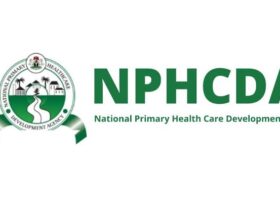UN health officials have revealed that there will be a 77 percent increase in cancer cases worldwide by the middle of the century.

The increase is a result of several variables such as changes in how much people are exposed to risk factors such as alcohol, tobacco and obesity, which are significant factors, including population expansion and aging.
Current estimates from the International Agency for Research on Cancer (IARC), a branch of the World Health Organization (WHO), state that “it is estimated that over 35 million cases of cancer will occur in 2050, compared to 20 million cases in 2022.”
The estimates from IARC’s worldwide cancer observatory are based on the best sources of data available from 185 countries and cover 36 different types of cancer.
In addition, IARC stated that ” in 2020, ten types of cancer accounted for over two-thirds of new cases and fatalities worldwide.”
Lung cancer accounted for 2.5 million new cases globally, making it the most common cancer. Also, 18.9 percent of cancer deaths were related to it.
Breast cancer in women ranked second in terms of occurrence and accounted for 6.9 percent of cancer-related deaths. Additionally, colorectal, prostate, and stomach cancers were other commonly occurring cancers.
Colorectal cancer ranked as the second most common cause of cancer-related death, followed by liver, breast, and stomach cancer.
READ MORE: Plateau rerun: Corps member, 2 INEC ad-hoc staff held hostage over missing election materials
Cervical cancer was the eighth most common cancer worldwide. It is also the ninth leading cause of cancer-related death and the most common cancer in women in 25 countries, many of which are in sub-Saharan Africa.
“One in 12 women in richer countries will be diagnosed with the disease in their lifetime and one in 71 will die of it. But in poorer countries, only one in 27 women will be diagnosed with cancer and one in 48 will die,” IARC said.
” These women are at a much-increased chance of dying of the disease due to delayed diagnosis and lack of access to high-quality treatment,” said Dr. Isabelle Soerjomataram, Deputy Head of the Cancer Surveillance Branch at IARC.
Significant disparities in cancer services around the world were also found by the WHO survey. For instance, the likelihood of including services related to lung cancer in health benefit programs was found to be up to seven times higher in higher-income countries.
While emphasizing the need for greater investment, Dr. Bente Mikkelson, Director of the Department of Non-Communicable Disease, stated that ” WHO, through its cancer initiatives, is closely collaborating with over 75 governments to advance universal access to cancer care.”
NAN








Leave a Reply